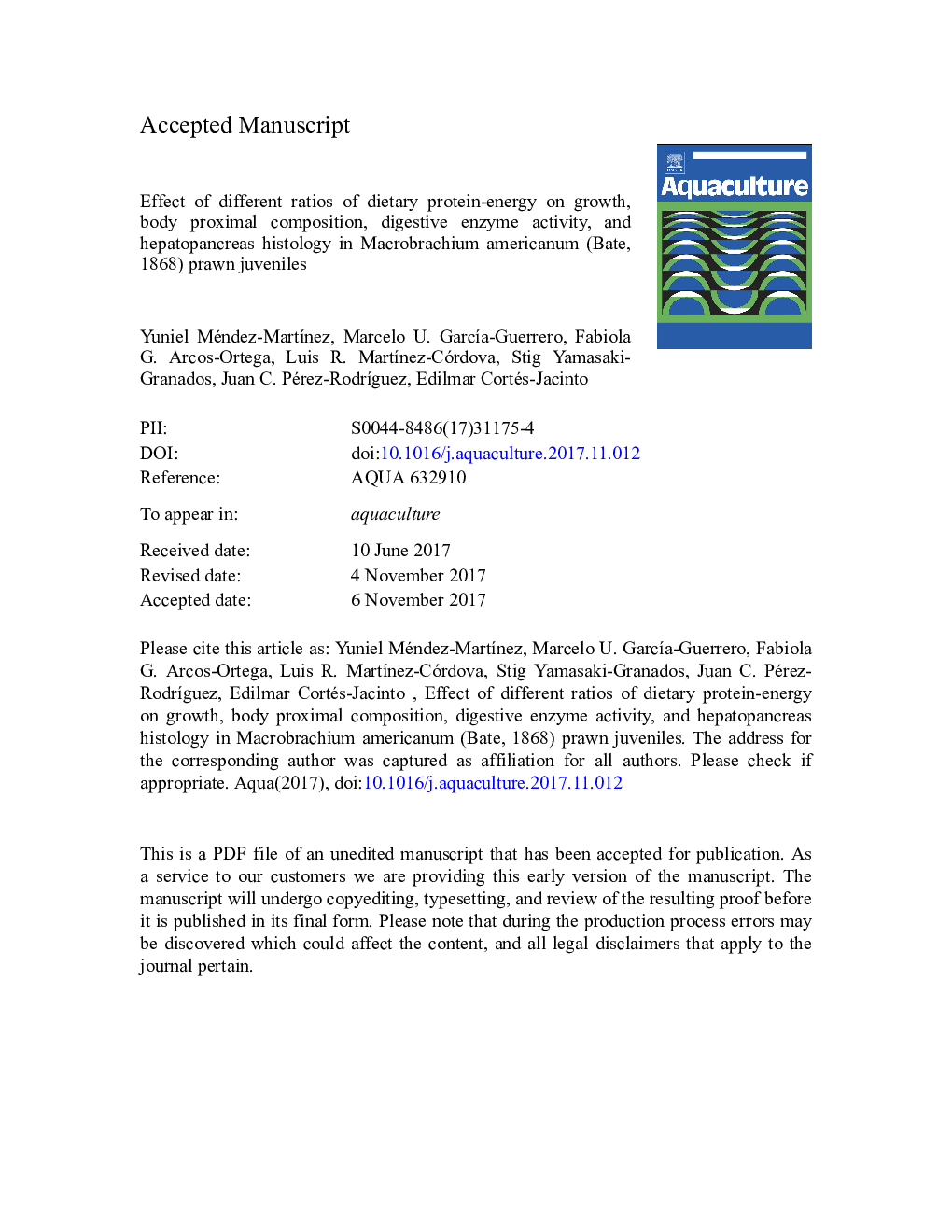| Article ID | Journal | Published Year | Pages | File Type |
|---|---|---|---|---|
| 8493506 | Aquaculture | 2018 | 38 Pages |
Abstract
The effect of dietary protein:energy (P/E) ratio on growth performance, body composition, digestive enzyme activities, hematology, and hepatopancreas histology was tested in the juvenile cauque river prawn Macrobrachium americanum. Six diets with two different crude protein levels (350 and 400 g kgâ 1 diet) and three lipid levels (60, 100, and 140 g kgâ 1 diet) were tested on juveniles in a factorial manner (3 Ã 2) to provide six different dietary P/E ratios: 17, 18, 19, 20, 21, and 22 mg CP kJâ 1 GE gâ 1. The indicators of growth performance and nutrition were significantly influenced by the dietary P/E ratio; however, no significant survival differences were observed among treatments. The dietary protein-lipid levels (P/E ratios) influenced significantly the whole body protein, lipid, and carbohydrate contents; lipid content in the whole body increased significantly when the dietary lipid level was increased from 60 to 140 g kgâ 1 at the same protein levels. The total protease activity increased significantly with the increase in dietary protein at each lipid level. Total cholesterol and glucose concentrations in the serum were significantly affected by the different dietary P/E ratios and lipid levels. These results, using the principal component analysis (PCA) with the covariance matrix, suggest that the diet containing 350 g kgâ 1 protein level and 100 g kgâ 1 lipid level with P/E of 18 mg CP kJâ 1 is optimal for cauque river prawn juveniles.
Keywords
Related Topics
Life Sciences
Agricultural and Biological Sciences
Aquatic Science
Authors
Yuniel Méndez-MartÃnez, Marcelo U. GarcÃa-Guerrero, Fabiola G. Arcos-Ortega, Luis R. MartÃnez-Córdova, Stig Yamasaki-Granados, Juan C. Pérez-RodrÃguez, Edilmar Cortés-Jacinto,
